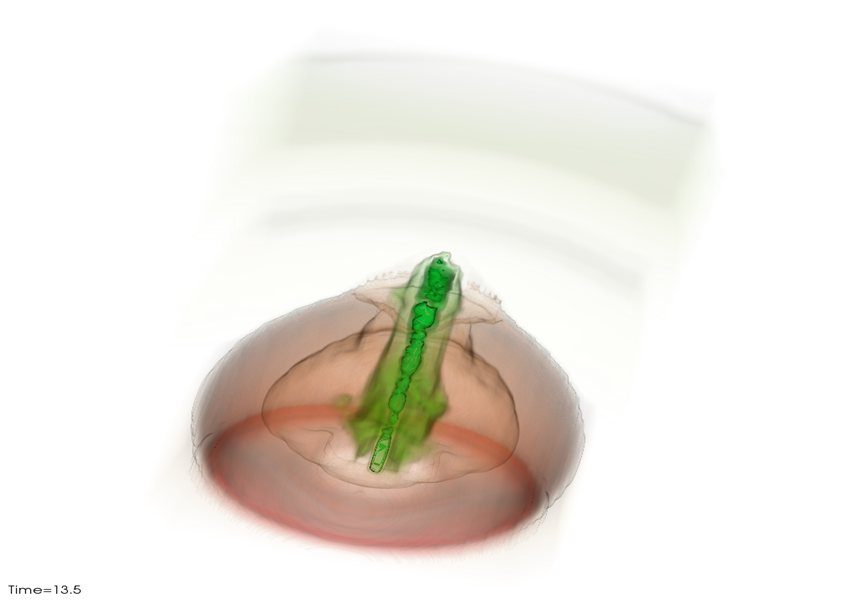
Titulo: Gravitational wave memory from the propagation of Long Gamma Ray Bursts
Lugar: Seminario del DAA. Edificio Investigación Jeroni Muñoz, planta cuarta, en Burjassot.
Dia: lunes 17 de junio de 2024. Hora: 12:00.
Resumen:
Gamma-ray bursts (GRBs) are produced during the propagation of ultra-relativistic jets within a post-merger ejecta or a pre-collapse massive star. It is challenging to study and observe the properties of the jet at the first seconds of propagation because the progenitor environment presents high opacity, however, non-photonic signals could improve our understanding of the jet propagation at early times. A promising candidate is a GW signal originating from ultra-relativistic blobs of matter that induce a metric perturbation, then GRB jets that accelerate to large Lorentz factors are potential sources of this kind of signal. In this talk, I will present numerical simulations of relativistic jets propagating through a massive, stripped-envelope star associated with long GRBs, breaking out of the star and accelerating into the circumstellar medium. We compute the gravitational wave (GW) signal resulting from the propagation of the jet through the star and the circumstellar medium. We show that key parameters of the jet propagation can be directly determined by the GW signal. The signal presents a first peak corresponding to the jet duration and a second peak which corresponds to the break-out time for an observer located close to the jet axis (which in turn depends on the stellar size), or to much larger times (corresponding to the end of the acceleration phase) for off-axis observers. We also show that the slope of the GW signal before and around the first peak tracks the jet luminosity history and the structure of the progenitor star. The amplitude of the GW signal is h+D ∼ hundreds to several thousand cm. Although this signal, for extragalactic sources, is outside the range of detectability of current GW detectors, it can be detected by future instruments such as LISA, BBO, DECIGO and ALIA. Our results illustrate that future detections of GW associated with GRB jets may represent a revolution in our understanding of this phenomenon.






